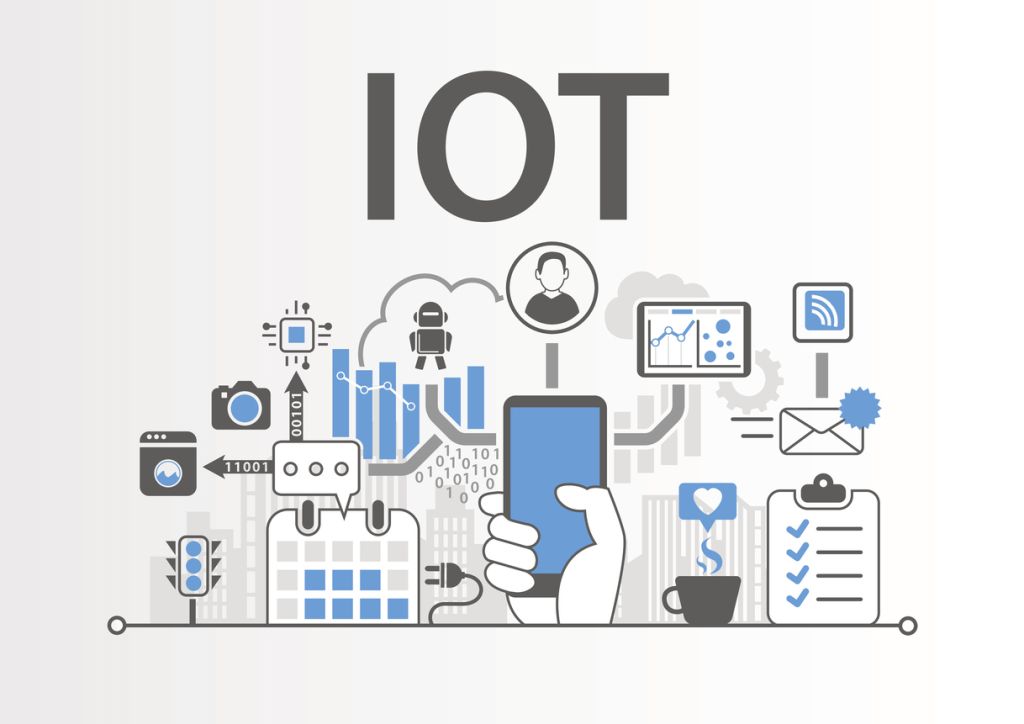
Internet of things or IoT is the exchange of data through the network and now the time has started when it is making it way towards the future. A few years back, the scientists, researchers, scholars were getting annoyed because of huge data. Earlier, data was collected from the reports, files which were maintained manually but now, IoT has reduced the physical storage and the mind-numbing task. Within a few minutes, the data can be stored in the cloud and can be used. In short, enhancement of data storage and data readability has taken place.
Automation Driving Growth:
One primary benefit of IoT is Automation. Smart systems are installed in the organisations to reduce the manpower. Smart systems consist of frequency recognition devices due to which checking/scanning time is minimised for every item arriving in the center. The whole process gets automated by its sensing and tracking capability. This kind of similar experience grabs the attention of consumers and businesses all over the world.
New Innovative Labs:
The place of a genius is not so different than before. Nowadays, the sensors can generate a notification message which enables the admin to act faster and waste less time. Besides, the system can be controlled remotely and hence, research work can be stored safely and the outcome of the product. Thus, creates a highly effective work environment for the researchers by eliminating the extra effort and by improving the speed of the work.
Various labs are replacing their old products with new innovative smarter things. The technology advancement have brought the Cloud computing concept and other expert systems which has managed and smoothened the process. Thus, the concept needs implementation and for that, the businesses and laboratories need to update the traditional system. And convert the old ways into automation.
But few people found it challenging as it requires a detailed analysis of existing laboratory. These laboratories have to recognise the places where technology can add new pieces together. The main motive behind such requirements is to deploy IoT enabled devices and services to communicate. Such that your established infrastructure can transfer data over the network.
Remotization of Lab:
A simple remote laboratory needs a different type of tools like the robotic arm (actuator), lab controller, camera and other lab products. The instructions provided over the internet are interpreted and sent to various sensors in laboratory controller, such as a robotic arm. These robotic arms work as per the commands like mixing two chemicals. Now one can perform research on the collected data from the recorded video stream and sensors in the main panel. The data collected from various sensors can be temperature levels, sound, vibrations and many other, sensitive information which can drive the growth of the project. Identifiers, which are readable by the machine added to the devices in the remote lab to safeguard the premise. An identifier is an alphanumeric string to identify the individuals such as barcode generation for cards.
If we talk about expert systems, Artificial intelligence comes at the first place on that list because of its incredible capability to perform the accurate tasks. Protection of IoT enabled laboratories is a vital step as it stores your lifetime research and other important work. Implementation of face recognising and voice recognising tools help in automating and controlling the stressful and messy job. It provides the highest security mechanism for the premises by restricting the intruders.
Combining Advanced Technology:
Various platforms are available by the cloud vendors to set up your IoT infrastructure. These platforms also avail the facility to develop whatever is booming in your mind. Cloud-based IoT platforms offer you to build applications over a network. It also allows interaction with the connected devices in your lab securely. IoT provides deep learning platforms such as APIs, a model used to extract the useful information and develop high-performance module from the data collected. One can register in the Machine Learning Course to know more in-depth understanding of the analytics and expert systems. To install it in your premises and to collect actual outcome from research.
Transforming a laboratory in the smart lab is not that much easy, but its implementation in real life can have multiple benefits such as:
- It is not compulsory to mark your presence for maintaining data from every process. In a smart lab, the operations can be handled remotely, and its log can be automatically maintained from the central system.
- Whole lab premise lies under your fingertip for continuous monitoring and management.
- Eliminating human from hazardous works and pulling machine to do such tasks efficiently.
- It can perform real-time operations within minutes.
- It can perform useful analytics on collected data from research.
- By introducing the Edge Computing technology in your infrastructure, you can remove the unnecessary information flowing through the network node. In this way, you can save your upfront cost by eliminating the extra space occupied by those data.
IoT is opening possible benefits for research organisations with its featured services. The services are driving the growth from decades. Through an outlined assessment and by proper follow of the methods can fulfil your need of the successful IoT enabled smart lab.